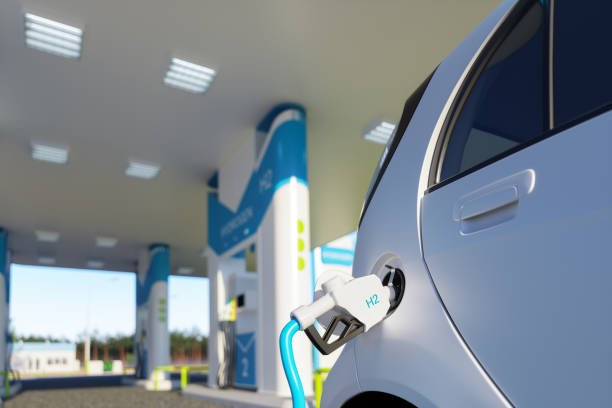Hydrogen Fuel Cell Vehicles: The Next Frontier in Clean Transportation
In a world increasingly focused on sustainable transportation solutions, hydrogen fuel cell vehicles (FCVs) are emerging as a promising alternative to traditional combustion engines. This cutting-edge technology combines the eco-friendly benefits of zero-emission driving with the convenience of quick refueling times, positioning FCVs as a potential game-changer in the automotive industry. But what exactly are hydrogen fuel cell vehicles, and how do they work? Let's dive into the world of this innovative propulsion system and explore its potential to reshape our driving future.

The only byproduct of this process is water vapor, making hydrogen fuel cell vehicles true zero-emission vehicles. This clean operation is one of the main attractions of FCVs, as they offer the environmental benefits of electric vehicles without the long charging times or range anxiety often associated with battery-powered cars.
A Brief History of Fuel Cell Technology
The concept of fuel cells dates back to the 19th century, with Welsh physicist William Grove often credited as the father of fuel cell technology. However, it wasn’t until the mid-20th century that fuel cells began to find practical applications, most notably in NASA’s space programs. The Apollo missions utilized fuel cells to generate electricity and drinking water for astronauts, demonstrating the technology’s potential in challenging environments.
In the automotive world, serious development of hydrogen fuel cell vehicles began in the 1990s, with major manufacturers like Toyota, Honda, and General Motors investing heavily in research and development. The first commercially available fuel cell vehicle, the Honda FCX Clarity, hit the market in 2008, marking a significant milestone in the technology’s journey from concept to reality.
Current State of Hydrogen Fuel Cell Vehicles
Today, several automakers offer hydrogen fuel cell vehicles in select markets, with models like the Toyota Mirai, Hyundai Nexo, and Honda Clarity Fuel Cell leading the charge. These vehicles boast impressive ranges, often exceeding 300 miles on a single tank of hydrogen, and can be refueled in a matter of minutes, much like traditional gasoline-powered cars.
However, the adoption of FCVs faces several challenges. The most significant hurdle is the lack of hydrogen refueling infrastructure. As of 2023, there are only a few hundred hydrogen fueling stations worldwide, with the majority concentrated in countries like Japan, South Korea, and parts of Europe and California. This limited infrastructure has restricted the widespread adoption of FCVs, confining them primarily to these regions.
Advantages of Hydrogen Fuel Cell Technology
Despite the current limitations, hydrogen fuel cell vehicles offer several compelling advantages that make them an attractive option for the future of transportation:
- Zero emissions: FCVs produce only water vapor as a byproduct, making them an environmentally friendly alternative to internal combustion engines.
- Quick refueling: Unlike battery electric vehicles, which can take hours to charge, FCVs can be refueled in just a few minutes, offering convenience comparable to traditional gasoline-powered cars.
- Long range: Many FCVs can travel over 300 miles on a single tank of hydrogen, addressing the range anxiety often associated with electric vehicles.
- Scalability: Fuel cell technology can be scaled up for use in larger vehicles like buses, trucks, and even ships, offering potential solutions for decarbonizing heavy transportation.
- Energy independence: Hydrogen can be produced from various sources, including renewable energy, potentially reducing dependence on fossil fuels and foreign oil.
Challenges and Future Outlook
While hydrogen fuel cell vehicles show great promise, several challenges must be overcome for widespread adoption:
- Infrastructure development: The limited availability of hydrogen fueling stations remains a significant barrier to FCV adoption. Expanding this infrastructure requires substantial investment and coordination between governments, energy companies, and automakers.
- Production costs: Currently, FCVs are more expensive to produce than conventional vehicles or battery electric cars. However, as technology advances and production scales up, these costs are expected to decrease.
- Hydrogen production: While hydrogen itself is clean-burning, the majority of hydrogen is currently produced using fossil fuels. For FCVs to be truly environmentally friendly, more sustainable hydrogen production methods, such as electrolysis powered by renewable energy, need to be widely implemented.
- Public perception: Many consumers are still unfamiliar with hydrogen fuel cell technology, and concerns about safety and reliability need to be addressed through education and demonstration of the technology’s benefits.
Despite these challenges, the future of hydrogen fuel cell vehicles looks promising. Many countries, including Japan, South Korea, and Germany, have made significant commitments to developing hydrogen infrastructure and promoting FCV adoption. Additionally, advancements in fuel cell technology and hydrogen production methods continue to improve efficiency and reduce costs.
As the world seeks to transition away from fossil fuels and reduce greenhouse gas emissions, hydrogen fuel cell vehicles represent an important piece of the sustainable transportation puzzle. While they may not be a one-size-fits-all solution, FCVs offer unique advantages that complement other clean energy technologies. As infrastructure expands and technology improves, we may see hydrogen-powered vehicles becoming an increasingly common sight on our roads, ushering in a new era of clean, efficient, and sustainable transportation.





